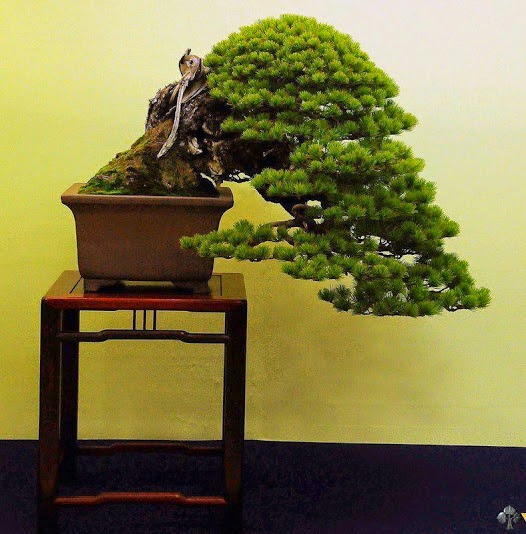Step Three Detail Pruning & Shaping Once you have move all the branches into the ap- proximate positions for your final design, trim back the length of branches to establish the overall shape of the tree. Remember that all bonsai have a triangular shape. In most cases, the largest and longest branches are located at the bottom. Branches gradually get thinner and shorter as they approach the apex. Once you have shortened the branches to the desired length and established a well balanced composi- tion, begin to work on each individual branch. Remove all green growth which emerges from the bottom of these branches. (Trees do not grow leaves out of the bottom of a branch) and cut or pinch back foliage on the tops and sides of each branch until they begin to develop a pad like shape. In the future, as the tree grows and develops you will need to keep these foliage pads pinched back and well formed. They will become more dense with green...
bonsai tree indoor, bonsai trees for beginners, bonsai tree, bonsai tree types, bonsai tree care, ficus bonsai tree, all bonsai tree,




























.jpg)

.jpg)
.jpg)



.jpg)
.jpg)
.jpg)
.jpg)
















.jpg)
.jpg)
.jpg)


.jpg)
.jpg)
.jpg)
.jpg)
.jpg)
.jpg)
.jpg)
.jpg)
.jpg)
.jpg)
.jpg)
.jpg)
.jpg)
.jpg)
.jpg)
.jpg)
.jpg)
.jpg)
.jpg)
.jpg)
.jpg)
.jpg)
.jpg)
.jpg)
.jpg)
.jpg)
.jpg)
.jpg)
.jpg)
.jpg)
.jpg)
.jpg)
.jpg)
.jpg)
.jpg)
.jpg)
.jpg)
.jpg)
.jpg)
.jpg)
.jpg)
.jpg)
.jpg)
.jpg)
.jpg)

.jpg)


















.jpg)

.jpg)

















.jpg)

.jpg)







.jpg)




































.jpg)
.jpg)
.jpg)
.jpg)
.jpg)
.jpg)
.jpg)
.jpg)



























Comments
Post a Comment